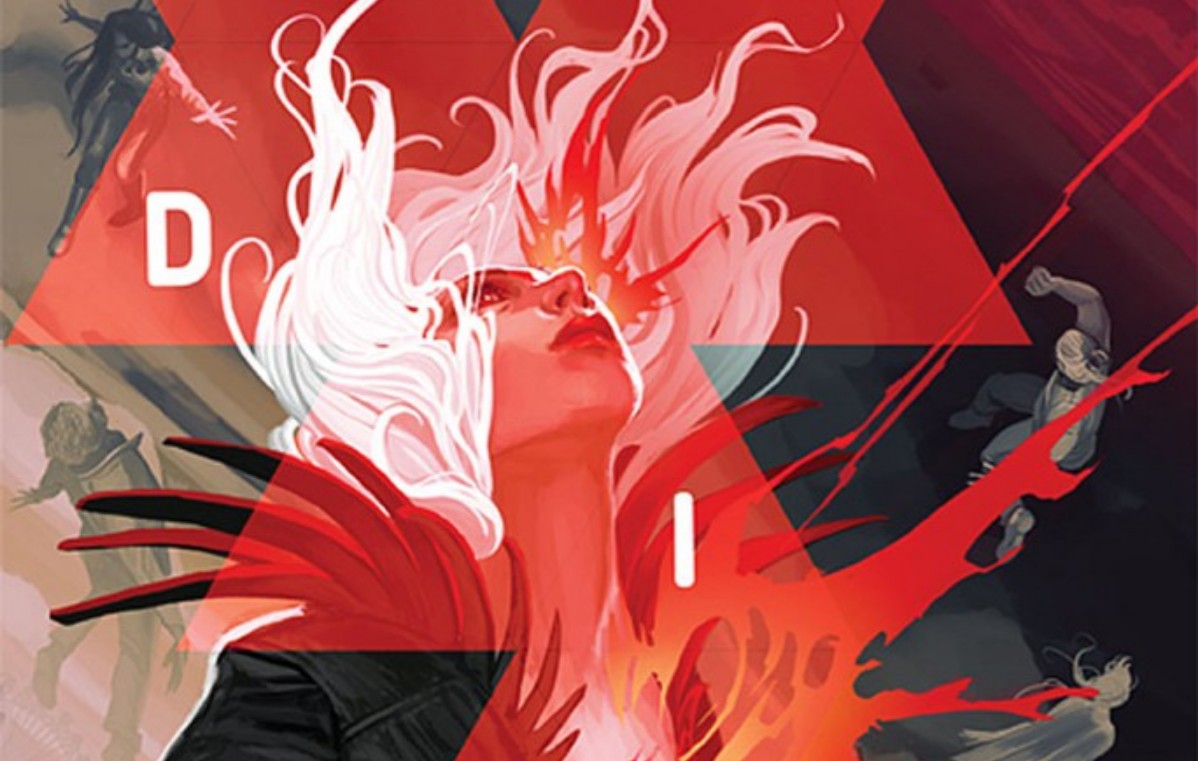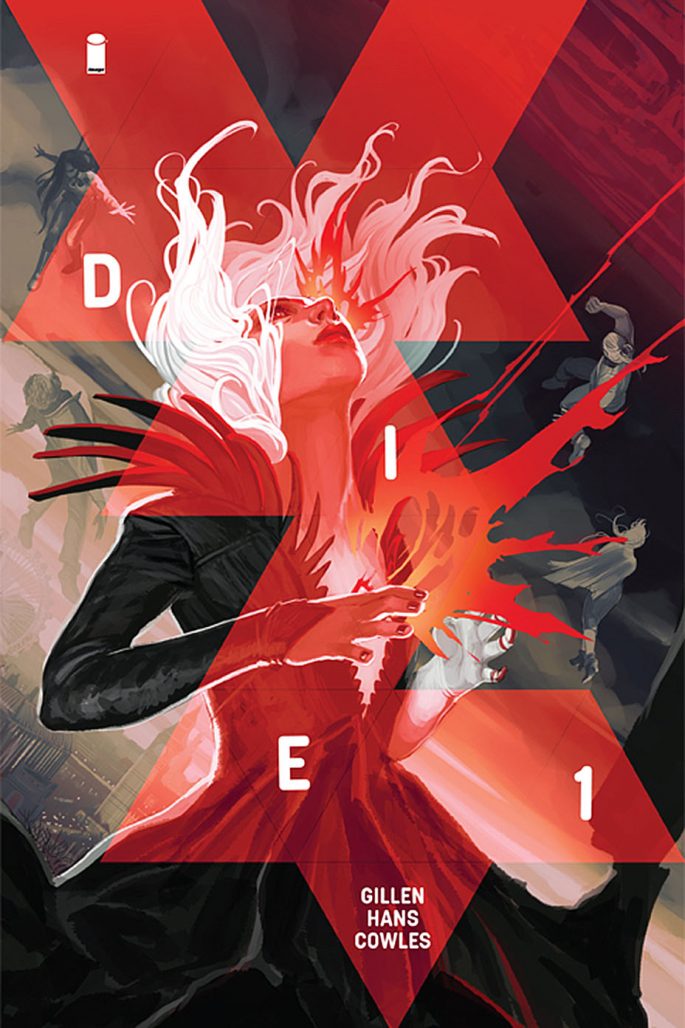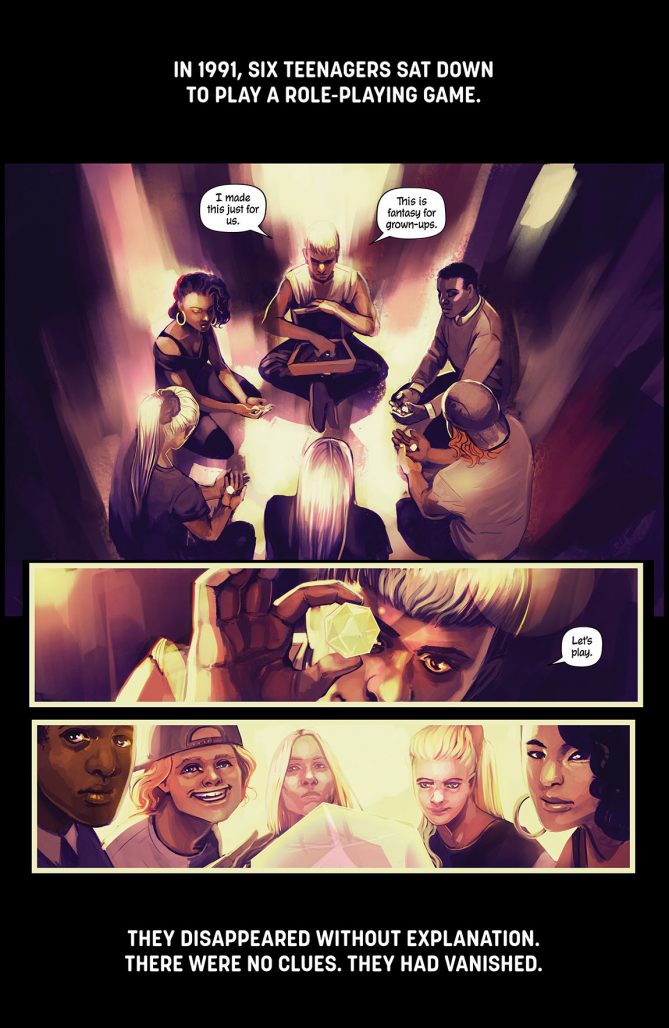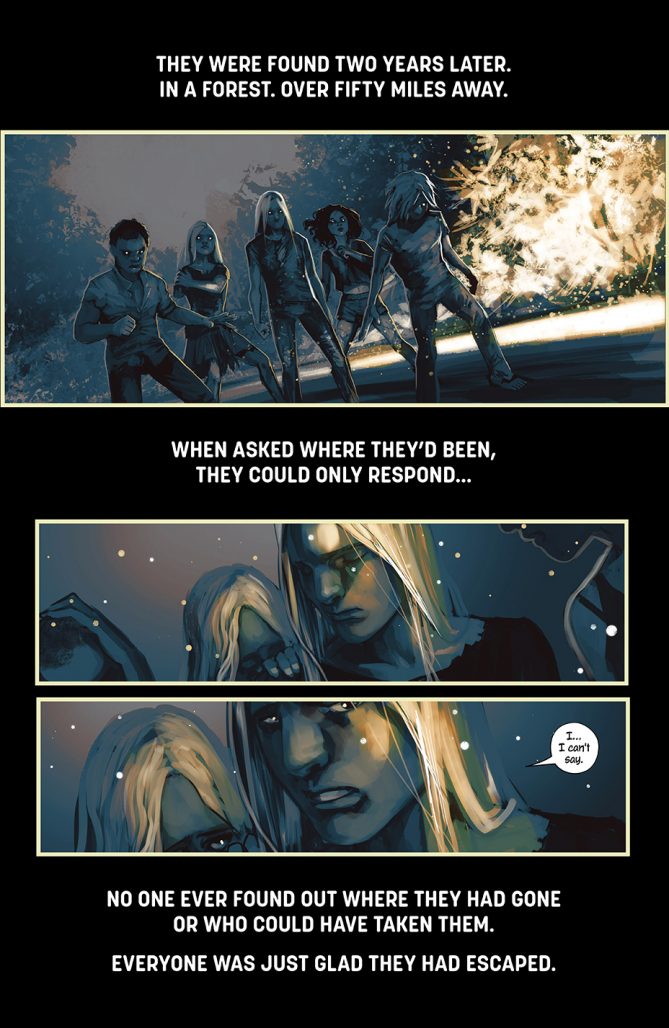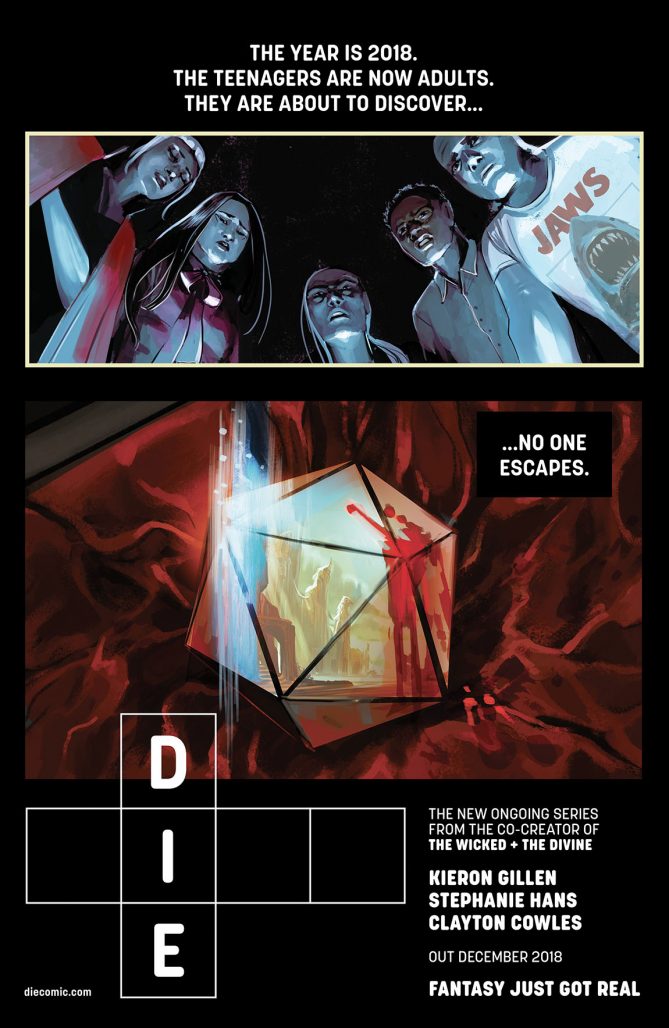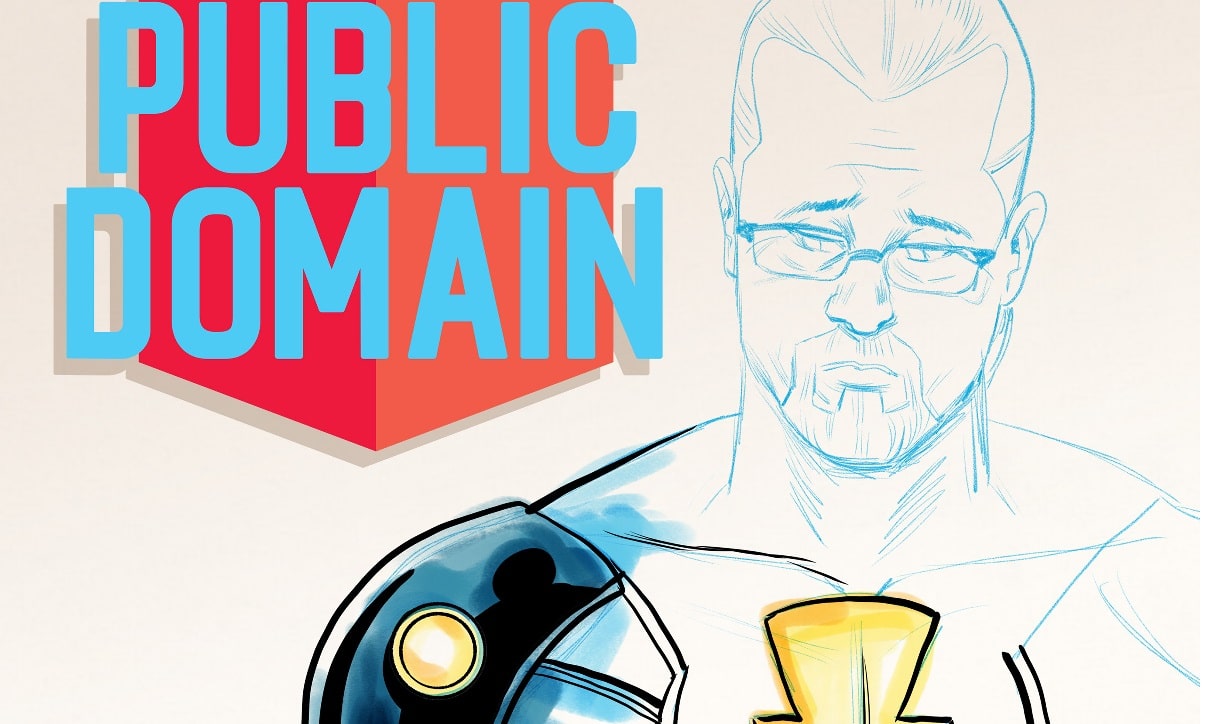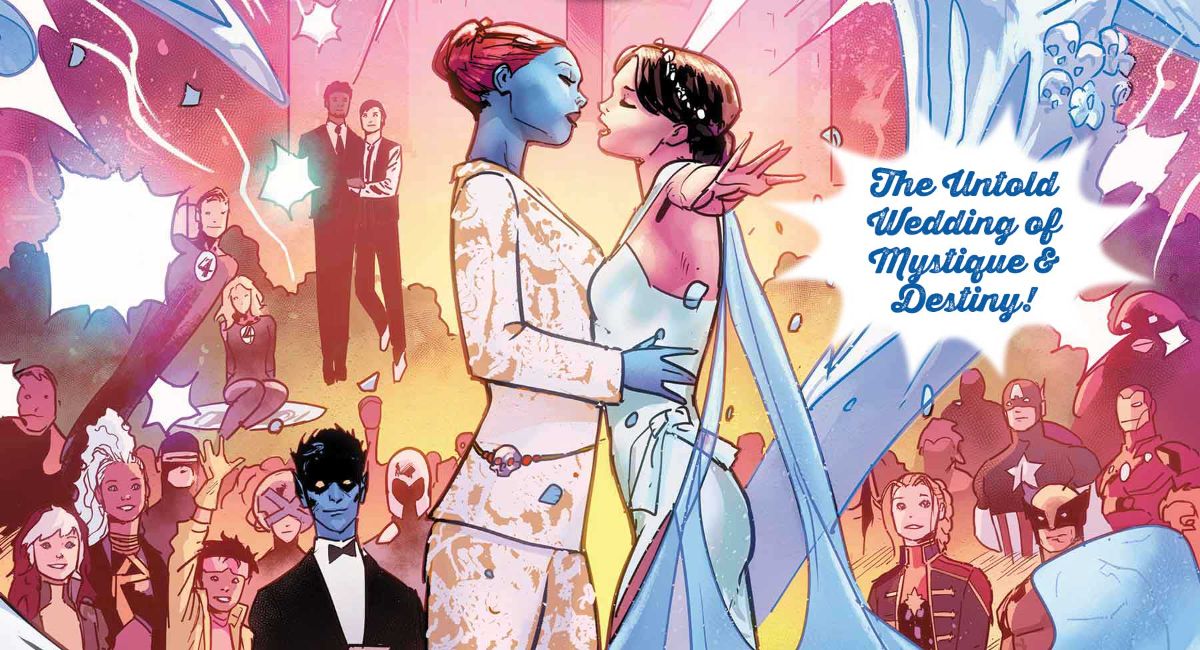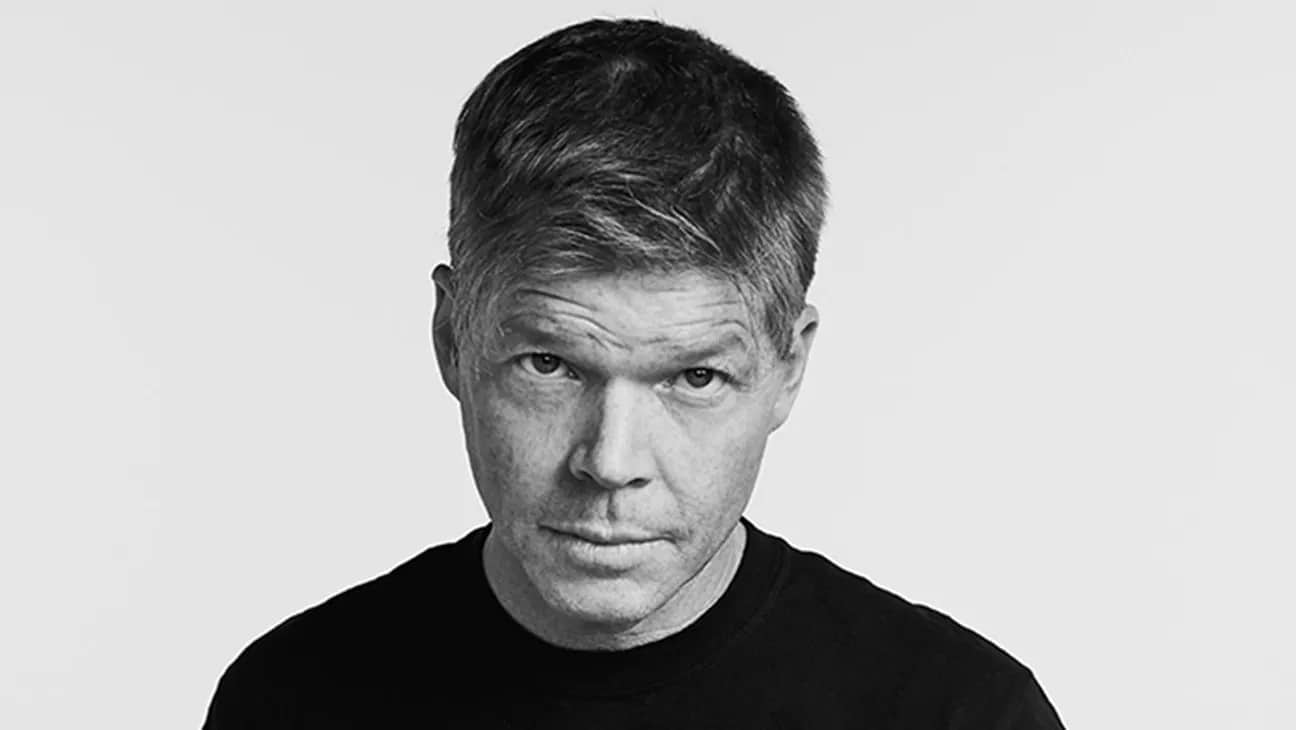By Kelly Kanayama
Kieron Gillen and Stephanie Hans’ upcoming Image comic DIE! has got fans hyped, and for good reason: it looks awesome. I sat down with them to talk about 90s teen nerd aesthetics, changing one’s artistic shoes, and what happens when high fantasy meets midlife crises.
Let’s start with the basics: what’s DIE! about?
Kieron Gillen: The two-word pitch is it’s goth Jumanji. But the actual pitch: in 1991, six teenagers sat down to play a roleplaying game. They disappeared, and are found two years later wandering in the forest, entirely incapable of explaining where they’ve been. 27 years later, these teenagers are now proper adults, and they’re about to discover that no one ever really escapes.
Probably the best comparison is the book IT.
It’s a book about comparing those teenage dreams and fantasies you had with the reality of adult life. It’s very midlife crisis – this is a book about 40-year-olds.
How many issues will it run for?
Gillen: Around half of how long The Wicked and the Divine is…
Much like WicDiv, it’s all planned out – I know the ending and the big beats – but it’s much more organic than WicDiv, in that there’s a lot more space for these characters to explore what makes them tick. It’s really quite character-led. You have these six very powerful characters and how their lives all went wrong. But it’s not just depressing; they’re really good people. And awful.
What does goth Jumanji look like artistically? That is, what kind of cool RPG looks will we get to see?
Stephanie Hans: 15 years ago, I stopped doing creative stuff because I thought I wasn’t ready. But a few years ago, I started thinking it might be the right moment to go back to that. So what you can expect is everything I learned during all of my years working in the mainstream comics industry – it’s being digested and cooked and put into this.
Gillen: Stephanie and I first worked together on Journey into Mystery. She did interiors for the final issue, and it’s astoundingly beautiful; it’s one of the best issues I was ever involved in. We’ve been talking forever about doing this – we initially had the idea for a different book before we did DIE!, but then the idea for DIE! dropped and it was like, “Oh, this is very clearly perfect.”
The world desperately needs a fantasy world as designed by Stephanie Hans. She can render stuff which is shockingly interesting; the romance and awful grandeur of it is immediately apparent.
Since the event that kicks everything off happens in the 90s, do you get to play around with a lot of 90s aesthetics, fashion, and so on?
Gillen: The fantasy part of the game is very much informed by the early 90s. This is acid house; Nevermind had just been released. It’s really kind of about the birth of the 90s in a way.
Hans: There’s a lot of influence from music, from movies, from video games. I was a real geek. There was no word for geeks at that moment, but I was a geek – I think for my 14th birthday, I asked my mother for the whole collection of Stephen King books. And my brother had this big collection of pulp books with those very, very kitschy covers. And all this is implied in the design for the comic.
Some of it comes from places that I had totally forgotten. Like when I was an art student in high school, my friends were all metalheads, and they had these art boards with lots of Van Halen stickers on them. And this really comes into the design of the world as well.
Gillen: Also, for the characters, a lot of – how to phrase this? With Jamie [McKelvie], a lot of it is, I do all the work on my end – as in the original world-building, lots of stuff like that – and then I take it to Jamie, and he can interpret it. Jamie works out how to execute it; he’s the director, the casting director, the set dresser, all those things. With Stephanie, I give her as much as I normally do, and then she gives everything back. It’s like collaborating with the ocean.
One of the characters is this sensitive metalhead. When she mentioned that at first, I was like, “Oh, that’s really interesting,” because I would never have made him a metalhead. I was a metalhead, but I thought that would be too close to me. But then Stephanie pointed out how metalheads in pop culture are always like Bill and Ted or Wayne’s World. And I’ve known those metalheads, I love those characters, but the sensitive, art school metalhead – I’ve known that guy, too. There’s so much stuff like that [in working with Stephanie].
Given that DIE! is your first ongoing comic, what are some of the challenges and advantages of working on an ongoing series compared to single issues or covers?
Hans: The challenge for me is – when I started working on the book, I was a nomad artist. I didn’t have an apartment for two years. And I realized that I could only do 90 pages and 30 covers a year if I didn’t have a home…
The other big challenge is, everything you don’t think about when you’re a cover artist – the logo, the title, whatever – all this becomes your problem. It’s like suddenly there’s a million layers to it and I feel like, “Oh, no, I’m going to die,” even though I have a very small part of this because Chrissy [Williams, the editor on DIE!] fixes the whole thing.
It’s like changing your shoes, in a way. When you’re a freelancer you can just do your thing and go away, and everyone’s happy. But we’re getting there.
Since this comic takes place in both a fantasy setting and a more real-world one, how do you, as an artist, handle continually flipping the switch between the fantastic and the ordinary?
Hans: That’s actually the easy part, because I assign a color scene to each setting. We have an Instagram kind of theme for the past, an under-colored one for the real world, and an over-colored one for everything that comes from the imagination. It really makes sense once you see it.
Gillen: Stephanie’s capable of moving up and down the reality scale interestingly. And she was telling me on the Image Comics panel how much she got to build this from scratch and change her styles and sequences – everything she’s acquired from doing covers, you’ll absolutely see it on the page.
Hans: This is a lot of reflection about my work! I’m a very intuitive artist. Honestly, all my work is chaos until the moment it makes sense. Even for me, it doesn’t make sense until then.
What do each of you hope people take away from DIE!?
Hans: I think people who will love it are the ones who like my work; there are a few people who’ve been following me for a while. They tend to talk about my work as something that makes them feel very emotional. That goes into a lot of my drawings and paintings and I think that’s something that’s going to be felt in the book. So I hope people who love it will have that kind of emotional reaction to it.
Gillen: I hope people take away as many copies of the comic as they can, and that they pay for them.
One of the books I referenced for DIE! was Planetary, which is about the development of the superhero genre, but is also a statement of what the superhero genre can be. It takes these old ideas and finds a new angle and polishes them and makes them shine. DIE! is partly like that, in the sense of – why the hell do any of us love fantasy in the first place, and how does fantasy hurt us?
Like the thing about geek culture winning is that there’s still that awful geek defensiveness. We don’t need to have that anymore. We can be grown-up and talk about the downside, about how this stuff has affected our lives, sometimes in a negative way. DIE! is a serious conversation about what fantasy is for, and how it has the power to make us better and the power to make us worse.


